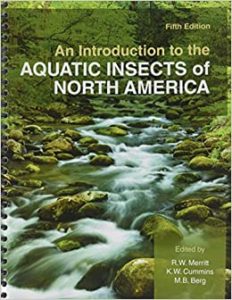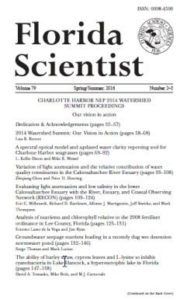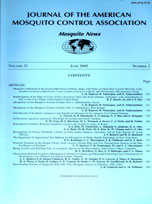Science

"Glossary of Morphological Terms" in An Introduction to the Aquatic Insects of North America (5th edition)
In publication since 1978, the fourth edition is the standard guide to the aquatic and semiaquatic insects of North America. The fifth edition–edited by R.W. Merritt, K.W. Cummins, and M.B Berg–was published in August 2019.

Hydroecological Monitoring of Benthic Invertebrate Communities of Marsh Habitat in the Upper and Middle St. Johns River
Abstract
Monitoring of benthic invertebrate communities in aquatic ecosystems has been used to evaluate a variety of environmental effects, including changes in hydrology. As part of a hydroecological assessment of the St. Johns River, FL, we studied invertebrate communities of shoreline and floodplain marsh habitats at locations in the middle and upper St. Johns River. A total of 112 invertebrate taxa were identified. Most were aquatic insects in the orders Odonata, Hemiptera, Coleoptera and Diptera. We examined a variety of metrics of invertebrate community structure and a surrogate measure of ecosystem function. Some of these metrics displayed patterns that could be related to hydrology. Preliminary sampling in floodplain marsh habitats with varying duration of inundation suggested some hydroecological patterns; relative abundance of taxa indicative of more permanent aquatic habitats (Ephemeroptera and Amphipoda) had a positive relationship with duration of inundation. Taxa able to undergo diapause during dry periods (Oligochaeta), those able to disperse to new habitats (Diptera, Coleoptera), and those with short life cycles adapted to temporary habitats (Diptera) had negative relationships between relative abundance and duration of inundation. We propose three new metrics that may be useful for future monitoring.

Effects of Bacillus Sphaericus (Vectolex®) on Nontarget Organisms in a Mosquito Control Program in Southeastern Wisconsin: A 3-Year Study
Abstract
A 3-year study (2000–2002) in southeastern Wisconsin was conducted to assess the effects of Bacillus sphaericus applied for mosquito control on nontarget wetland invertebrates. The experimental design consisted of control and treatment sites (that were applied by helicopter with Vectolex® CG), each in 2 vegetation habitat types: reed canary grass marsh (Phalaris arundinacea) and cattail marsh (Typha spp.). In each of these areas, a predetermined number of timed (30-sec) D-frame aquatic net samples containing vegetation, detritus, and invertebrates were collected 1 day before spraying and 72 h after spraying to detect for effects. We examined and compared 5 bioassessment measures to determine if there was an effect of B. sphaericus on nontarget organisms during each of the sampling years. The metrics tested were 1) mean taxa richness (the mean number of all taxa), 2) mean diversity (combines taxa richness and abundances in a summary statistic; i.e., Shannon Index [H′]), 3) Diptera richness (minus mosquitoes) as a proportion of all other taxa richness (Diptera/others richness), 4) Diptera abundance (minus mosquitoes) as a proportion of all other invertebrate abundance (Diptera/others abundance), and 5) functional group changes in percent collector–gatherers, collector–filterers, scrapers, shredders, and predators. When Vectolex was applied during 6 treatments at the labeled dosage rate in the above habitats in Brookfield, WI, no detrimental effects to nontarget organisms could be attributed to this microbial insecticide. Much of the variation in the control vs. treatment and pre vs. post plots was attributed to factors other than the effects of B. sphaericus on nontarget organisms, such as the time of sampling, natural variation that occurs in such diverse habitats as canary grass and cattail marshes, and water depth, which varied among years.